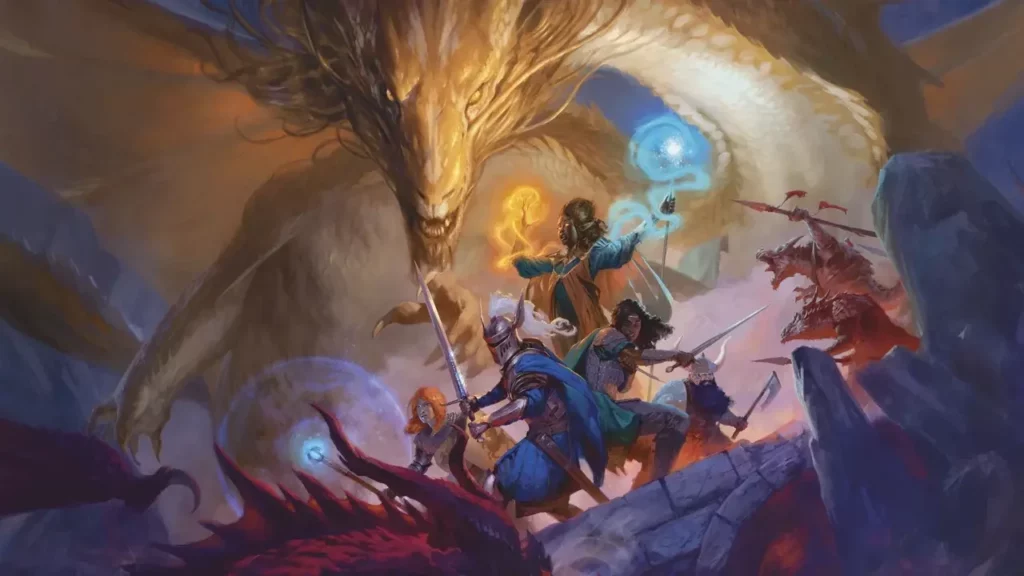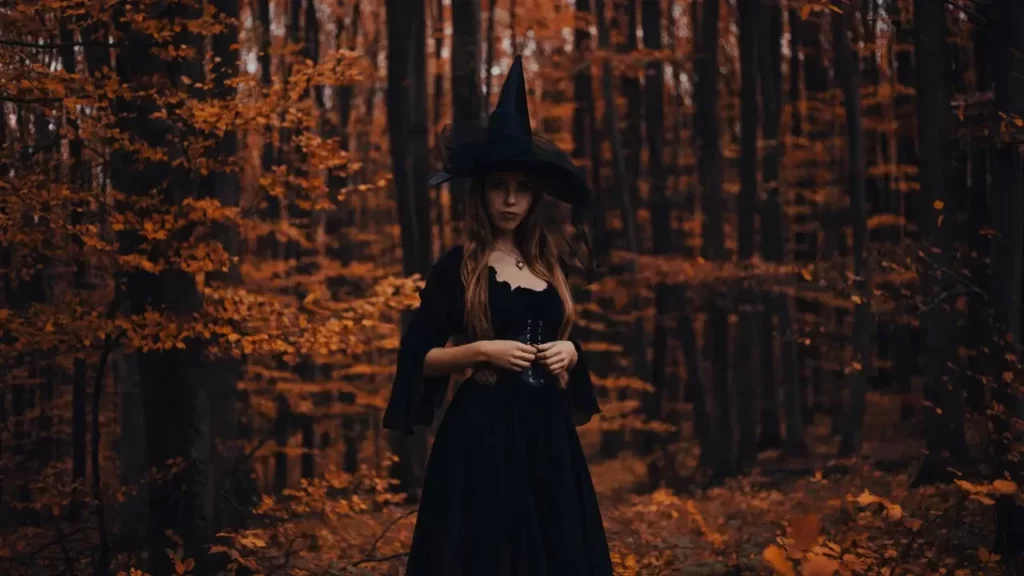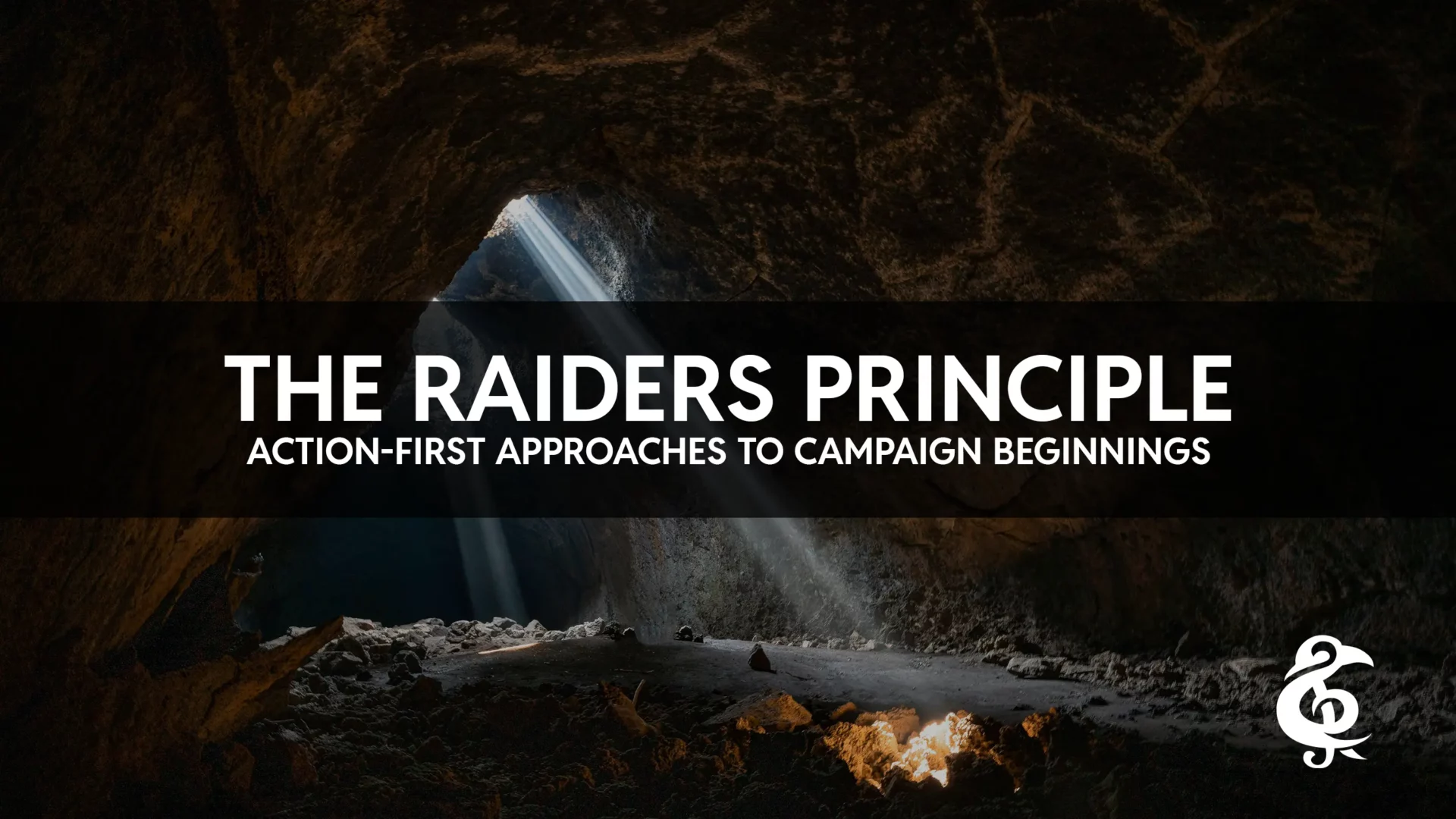
The release of the 2024 Player's Handbook represents a major milestone in the history of Dungeons & Dragons (D&D), serving as a significant revision to the beloved 5th Edition released back in 2014. The Player's Handbook (PHB) is one of the three main core rulebooks of D&D. This update is the largest PHB in its entire history—around 384 pages packed with new and improved character options, equipment, and spells.
In this article, we'll compare the 2024 PHB against the 2014 PHB, detailing its mechanical shifts, design philosophies, and overall impact on player experience. We'll detail the changes that encompass everything from core rules and character creation to spellcasting and subclasses.
Core Rules and Usability Enhancements

The 2024 Player's Handbook introduces fundamental changes designed to streamline gameplay and enhance overall user experience, making the rules more accessible and consistent for everyone.
Improved Organization and Accessibility
Improved organization serves as the handbook's key focus, significantly boosting usability compared to the original. Players consistently describe it as "way better organized," following a logical flow: Rules > Character Creation > Feats > Equipment. This structure fixes a common complaint about the previous handbook, where key gameplay elements were often difficult to find.
This organization shows up throughout the 2024 Player's Handbook in several ways. The Table of Contents is much more comprehensive, now including page references that make it easier to read through the source material. The revision also adds a dedicated, alphabetized Rules Glossary that acts as a quick reference for gameplay mechanics such as Exhaustion and Paralyzed as well as rules for Cover and Resting. This glossary saves time by eliminating the constant searching through pages that players and Dungeon Masters used to do when looking up rules.
The book also includes more artwork, with each class and subclass getting its own illustrations that help players visualize their characters. These changes make the game much easier to learn and play. The designers focused on making D&D more accessible to everyone.
New and Refined Terminology in the 2024 Player's Handbook
The 2024 Player's Handbook introduces several new terms that help clarify the rules:
- Magic action - Used for magical class features, spells, and magic items. Any ability requiring a "Magic action" won't work in antimagic fields. The fighter's Action Surge now explicitly grants an additional action "except the Magic action."
- Bloodied - This term from previous editions returns to describe a creature with half or fewer of its maximum Hit Points.
- Emanation - A new area of effect type similar to a Sphere, but moves with its target and allows the caster to exclude the target from the effect.
These terms reduce ambiguity that often required DM rulings or "house rules" in the 2014 edition.
Streamlined General Mechanics
The 2024 PHB adjusts several core mechanics to make the game run more smoothly:
- Truesight no longer automatically reveals the true form of shapeshifters like mimics, doppelgangers, and succubi. This change also affects spells like moonbeam, which previously gave these creatures disadvantage on saving throws. Now a druid's Wild Shape is just as vulnerable to moonbeam as any other shapeshifter.
- Dispel Magic becomes much more useful because many magical abilities are now classified as spells. Effects that couldn't be dispelled before can now be ended with dispel magic, making it a more versatile tool.
- Turn Undead works more consistently since undead creatures no longer have "Turn Resistance," "Turn Defiance," or "Turn Immunity" traits. This makes the ability reliable against its intended targets.
These changes balance the game by making some abilities less automatic while making others more useful across different situations.
Character Creation Transformed

The 2024 Player's Handbook completely changes how you build characters, moving beyond the mechanics-first approach to embrace a story-driven process. Character creation in the 2024 PHB follows a completely different order that puts story first. Instead of starting with what your character is, you now start with what your character does.
Reordered Character Creation Flow
The 2024 PHB changes the character creation process from the 2014 sequence of Race > Class > Ability Scores > Alignment > Backgrounds > Equipment to a new story-focused order: Class > Background > Equipment > Species > Ability Scores > Alignment.
This new sequence works like "stepping backward in time through your character's history." You start with your character's current identity (class), then explore where they came from (background), and finally determine what they are (species). This puts a character's identity and story ahead of their biology.
The "Creating a Character" chapter supports this new approach with detailed sections and tables, including recommended ability scores for each class, suggested backgrounds based on primary ability scores, and rollable tables for random character traits. These tools help new players understand character building and create interesting concepts quickly.
2014 vs 2024 Player's Handbook
| Step | 2014 PHB Order | 2024 PHB Order |
|---|---|---|
| 1 | Race | Class |
| 2 | Class | Background |
| 3 | Ability Scores | Equipment |
| 4 | Alignment | Species |
| 5 | Backgrounds | Ability Scores |
| 6 | Equipment | Alignment |
The New Role of Species (formerly Races) and Backgrounds
The 2024 PHB makes a major change to how character abilities work. Species no longer provide ability score bonuses - that responsibility now belongs to your character's background. This matches the optional rules from Tasha's Cauldron of Everything and lets you create any character concept without mechanical penalties.
This change means you can build a strong Wizard or a nimble Dwarf without feeling like you're fighting the system. Your background now determines your starting bonuses, representing what your character learned before becoming an adventurer.
Backgrounds have become much more important in the 2024 Player's Handbook. Each of the 16 backgrounds provides ability score increases, an Origin feat, skill proficiencies, tool proficiency, and starting equipment. This connects your character's past directly to their mechanical abilities.
The 2024 PHB also introduces three new species: the Aasimar, Goliath, and Orc. Existing species received updates too - Dragonborn can now fly with Draconic Flight, and Dwarves get 120-foot Darkvision
Feats: From Optional to Core
Feats are now mandatory for every character from Level 1. This provides immediate customization and a slight power boost, meeting player demand for more individual expression.
The 2024 Player's Handbook organizes feats into three categories:
- Origin Feats: Each background grants a specific feat at Level 1. These include reworked classics like Skilled and Magic Initiate, plus new options like Musician and Crafter.
- General Feats: Now all "half feats" that provide +1 to an ability score plus other features. War Caster adds +1 to Intelligence, Wisdom, or Charisma, while Great Weapon Master adds +1 to Strength. Available at Level 4, they eliminate the choice between powerful abilities and stat improvements.
- Epic Boon Feats: Extremely potent feats for high-level characters only. The Wish spell can replace existing feats with Epic Boons, emphasizing their legendary status.
Key changes include Lucky granting advantage instead of rerolls, and removing the -5/+10 mechanic from Sharpshooter and Great Weapon Master. The problematic Sentinel and Polearm Master combo has been addressed, while Magic Initiate now clarifies that learned spells can use other spell slots.
Tools and Crafting: Enhanced Guidelines
The 2024 PHB makes tools much more useful with clear mechanical guidelines. Each tool now has a designated ability score and specific Difficulty Class (DC), giving DMs and players a concrete framework that makes tool proficiencies actually matter in gameplay.
Comprehensive crafting rules now cover non-magical items, potions, spell scrolls, weapons, and armor. Each item type has detailed requirements for raw materials, necessary skills, and time investment, allowing players to engage with downtime activities beyond combat. Magic item crafting receives the biggest expansion, with tool proficiency directly linking character skills to powerful artifacts. The rules outline specific time commitments, material costs, and allow work during short rests for flexibility.
These changes make non-combat skills and resource management much more important, encouraging players to engage with the world beyond fighting.
Class and Subclass Revisions

The 2024 PHB updates all 12 core classes for better balance, increased versatility, and clearer rules. These changes reflect ten years of player feedback, ensuring every class feels powerful, distinct, and enjoyable.
Universal Subclass Count and Design Philosophy
Every class now features exactly four subclasses in the Player's Handbook. This levels the playing field - classes like Ranger gain two new core subclasses that were previously in supplemental books.
Classes that had more subclasses, such as Wizard (eight) and Cleric (seven), now have fewer core options. Some popular schools of magic (Conjuration, Enchantment, Necromancy, Transmutation) and divine domains (Knowledge, Nature, Tempest) are no longer included. While this limits immediate options, it creates a consistent baseline for all classes.
The revisions also reduce reliance on DM interpretation for class features. Wizards of the School of Evocation no longer halve gold costs for transcribing evocation spells - a feature that depended on finding specific scrolls. Instead, they add new evocation spells for free at certain levels.
Similarly, Cleric's Divine Intervention no longer requires a roll to see if their deity helps, and the player chooses to cast any cleric spell of 5th level or lower rather than leaving the effect to DM discretion.
This shift toward greater player agency and clearer rules makes the core PHB more self-contained, reducing dependence on external sourcebooks for a complete experience.
The Weapon Mastery System in the 2024 Player's Handbook
A brand-new feature for martial classes introduces "Weapon Mastery," allowing characters to specialize in specific weapons with unique combat properties. This system adds tactical depth to melee combat and rewards players who swap weapons to suit different situations. Mastery properties add extra effects to attacks or boost defense under certain conditions:
- Cleave: When hitting an enemy with a melee attack, make another attack roll against a different creature within five feet.
- Graze: Deal damage even when an attack roll misses.
- Nick: Extra attacks with Light weapons can be rolled into the main Attack action, saving a Bonus Action.
- Push: Push enemies away after hitting them.
- Sap: Target has disadvantage on their next attack roll after being hit.
- Slow: Reduce target's Speed by ten feet after hitting them.
- Topple: Target must make a Constitution saving throw or be knocked Prone.
- Vex: Gain advantage on your next attack roll against the target after dealing damage.
Players can change their mastery properties during a long rest, allowing strategic adjustments for upcoming encounters. This system addresses a major critique of the 2014 edition: martial classes lacked tactical options compared to spellcasters.
By giving martials tools for battlefield control and applying conditions, Weapon Mastery transforms combat from pure damage dealing into tactical positioning and debuffing. This makes martial gameplay as engaging and strategic as spellcasting.
Casters at Level One in the 2024 Player's Handbook
The 2024 PHB allows certain spellcasting classes to access their magical abilities at Level 1. Hybrid spellcasters like Paladins and Rangers now gain spellcasting at Level 1 instead of Level 2, while Warlocks receive their first Eldritch Invocation at Level 1.
This change ensures hybrid classes immediately feel like their intended archetype. A Paladin can feel like a divine warrior who casts spells from the start, rather than just a martial character for their first level. Players get immediate access to their unique mechanics, making early gameplay more engaging and true to their class identity.
This front-loads core class features to eliminate the "waiting to come online" feeling, which is especially beneficial for new players and shorter campaigns where every level matters.
Key Changes Across All 12 Classes
The 2024 Player's Handbook includes new or refined features for all 12 classes, addressing mechanical issues and player frustrations from the previous edition:
- Barbarian: Rage now lasts 10 minutes and can be extended with a Bonus Action. New Brutal Strike ability at 9th level offers tactical options during Reckless Attacks, while Primal Knowledge allows using Strength for certain skill checks while raging.
- Bard: Bardic Inspiration lasts an hour and can be used after a roll is made. Magical Secrets allows choosing spells from more classes, and the new Words of Creation capstone provides powerful word spells.
- Cleric: Divine Intervention lets you cast any Cleric spell of 5th level or lower for free, without rolls or DM choice. Channel Divinity gains more uses plus Divine Spark, while Blessed Strike offers extra melee or magic damage.
- Druid: Wild Shape becomes a Bonus Action, and druids can speak while transformed. Known Forms are swappable on long rests, and Primal Strike adds damage to Wild Shape attacks at higher levels.
- Fighter: Beyond Weapon Mastery, Fighters gain expanded Second Wind uses with Tactical Mind and Tactical Shift abilities. Indomitable is improved for better saving throw rerolls.
- Monk: Stronger Martial Arts damage progression makes unarmed strikes more potent. Deflect Attacks works on ranged and melee attacks, while Uncanny Metabolism helps recover resources mid-combat. The Warrior of the Elements subclass gets a complete overhaul.
- Paladin: Divine Smite becomes a Bonus Action spell, streamlining use and preventing extreme damage scenarios. Find Steed is always prepared and free once per long rest, while Lay on Hands also becomes a Bonus Action.
- Ranger: Hunter's Mark is always prepared and free twice per long rest. Natural Explorer becomes Deft Explorer with more skills and languages, while Foe Slayer adds to Hunter's Mark damage.
- Rogue: New Cunning Strike trades Sneak Attack damage for tactical effects. Reliable Talent comes earlier, and the Stroke of Luck capstone is improved.
- Sorcerer: More prepared spells plus new Innate Sorcery (Bonus Action for advantage on spell attacks and +1 spell DC). They recover half their sorcery points at level 5. Metamagic improvements include Extended giving advantage on concentration, Heightened costing only 2 points, and Twinned working with upcasted spells.
- Warlock: Eldritch Invocations start at 1st level. New Magical Cunning restores spell slots, and free Contact Other Plane lets you communicate with patrons.
- Wizard: Swap cantrips on long rests and prepared spells on short rests. Improved Spell Mastery allows free casting of certain spells, while enhanced Arcane Recovery regains more spell slots.
These updates ensure every class feels powerful and distinct, reducing "optimal" build pressure and fostering greater diversity in party composition.
Spellcasting Evolution in the 2024 Player's Handbook

The 2024 Player's Handbook dedicates over 100 pages to spells, featuring nearly 400 options. This extensive revision focuses on buffing classics, porting popular spells from other sourcebooks, and introducing new ones to refine the spellcasting experience for all practitioners.
Spell Buffs, Clarity, and New Additions
Many favorite spells now feel more impactful, better reflecting their action and spell slot costs. Healing spells received major boosts - Cure Wounds now heals 2d8 + spellcasting modifier, while Healing Word heals 2d4 + modifier at 1st level. Prayer of Healing now grants Short Rest benefits to up to five creatures in addition to restoring Hit Points.
Damage spells gained new functionality and improvements. Cloud of Daggers can now move up to 30 feet using a Magic action on subsequent turns, while Chromatic Orb can strike an additional enemy. Even underused cantrips like Blade Ward got upgrades - it now lasts a full minute with Concentration and forces attacking enemies to subtract 1d4 from their attack rolls.
The 2024 PHB makes spells easier to find and use. Class-specific spell lists are included directly within each class description, eliminating book flipping. Spell descriptions feature clearer wording without changing mechanics, plus more artwork for inspiration. The "Ritual" tag moved to the casting time section for easier identification.
New spells include Tasha's Bubbling Cauldron (creates potions), Fount of Moonlight, Jallarzi's Storm of Radiance, Sorcerous Burst, and Starry Wisp.
These changes make healing spells more viable, encourage broader spell diversity, and create more dynamic combat options. More spells now feel "worth it" for their resource cost, enriching tactical possibilities in combat and exploration.
Major Spell Revisions in the 2024 Player's Handbook
Individual spells received extensive revisions to address exploits, streamline complexity, and rebalance power dynamics:
- Core Rules Updates: Truesight no longer reveals shapechangers' true forms, and Moonbeam loses its advantage against them due to the removal of the "shapechanger" tag. Dispel Magic and Turn Undead are buffed by reclassifying magical abilities as spells and removing resistances/immunities.
- Cantrip Improvements: True Strike is now "actually okay" - it lets you hit with your spell modifier and adds radiant damage (in d6s) starting at 5th level.
- Action Economy Changes: Jump becomes a Bonus Action, allowing 10 feet of movement to jump 30 feet in any direction and can be upcast for multiple targets. Armor of Agathys also becomes a Bonus Action, and additional temporary HP can extend its effect. Goodberry consumption is now a Bonus Action.
- Saving Throw Overhauls: Sleep and Color Spray no longer use hit points - creatures make saving throws instead. Sleep has a 5-foot radius and requires two failed saves for unconsciousness. Counterspell is no longer guaranteed - targets can avoid it with a Constitution saving throw.
- Damage and Targeting Updates: Magic Missile now rolls a d4 for each dart instead of one d4 for all, increasing variance. Tasha's Hideous Laughter can be upcast for additional targets and removes the Intelligence restriction. Power Word spells now have effects even against targets above 100 hit points. Ray of Sickness guarantees poison on hit.
- Concentration Requirements: Force Cage and Spiritual Weapon now require Concentration, reducing their power level.
- Exploit Prevention: Simulacrum can no longer cast Simulacrum, preventing infinite loops. Grease is explicitly non-flammable. Goodberry no longer synergizes with Life Clerics. Wish adds "Lady of Pain" intervention for multiverse-affecting wishes and introduces "Sudden Learning" to replace feats.
- Summoning Simplification: Conjure spells are streamlined - Giant Insect uses specific stat blocks, while Conjure Animals summons spectral beings that function purely as combat abilities without world interaction.
- Quality of Life: Aura of Vitality healing becomes a free action after casting, allowing normal turns while healing.
These changes create a healthier spell ecosystem where more options are viable without any single spell dominating encounters or trivializing challenges.
Equipment and Magic Item Adjustments

The 2024 PHB refines equipment rules and introduces a robust magic item system, including crafting and new item types. These changes deepen player engagement with the game world beyond combat.
Magic Item Philosophy: Nerfs, Buffs, and New Discoveries
The 2024 Player's Handbook includes over 400 items, adjusting existing magic items and adding new categories. Some items received nerfs (like Cube of Force) while others got buffs (like Sphere of Annihilation). Rules for purchasing magic items are now based on rarity rather than individual pricing, providing a clearer economic framework.
A major new category introduces Enspelled Items: Enspelled Armor, Enspelled Staff, and Enspelled Weapon. These items are imbued with spells of 8th level or lower, with rarity tied to spell level - cantrips create Uncommon items while 8th-level spells create Legendary ones.
Enspelled items typically contain 6 charges, regaining 1d6 charges daily at dawn. Expending one charge casts the bound spell. Crucially, the spell's saving throw DC and attack bonus are determined by the spell's level, not the character's ability scores. This makes them valuable for non-spellcasters, allowing access to powerful magical effects without inherent magical abilities.
Enspelled Armor is restricted to Abjuration or Illusion spells, while Enspelled Weapons must contain Conjuration, Divination, Evocation, Necromancy, or Transmutation spells.
Wands received adjustments - while some have lower DCs, they're more accessible through new crafting rules. Importantly, they can be used by anyone and don't require attunement, making wands universally useful.
New magic items include: Baba Yaga's Dancing Broom (animated broom for distraction or battle aid), Hag Eye, Potion of Pugilism, Cube of Summoning, Lute of Thunderous Thumping, Energy Bow, Hat of Many Spells, and Quarterstaff of the Acrobat.
2024 Player's Handbook: The Conclusion

The 2024 Player's Handbook represents a comprehensive evolution of Dungeons & Dragons 5th Edition. The changes focus on streamlining the game, enhancing player agency, and refining core mechanics based on a decade of community feedback.
Improved organization and clear terminology make the rules more accessible to everyone. The narrative-driven character creation process empowers players to craft unique heroes from the start, while the overall experience becomes smoother and more engaging for groups of all experience levels.
Martial classes receive much-needed boosts through Weapon Mastery and other improvements, ensuring dynamic combat for all party members. Spellcasters find many spells rebalanced and buffed, with more viable and impactful options encouraging greater diversity in spell selection rather than relying on a few overpowered choices.
The 2024 PHB achieves its goals of streamlining, balancing, and enhancing D&D 5E. By incorporating community feedback from ten years of play, it addresses long-standing issues while maintaining the core identity that made 5th Edition beloved. The changes foster greater creativity, reduce rules ambiguity, and deliver a more dynamic and satisfying experience for players who want tactical depth without overwhelming complexity.



